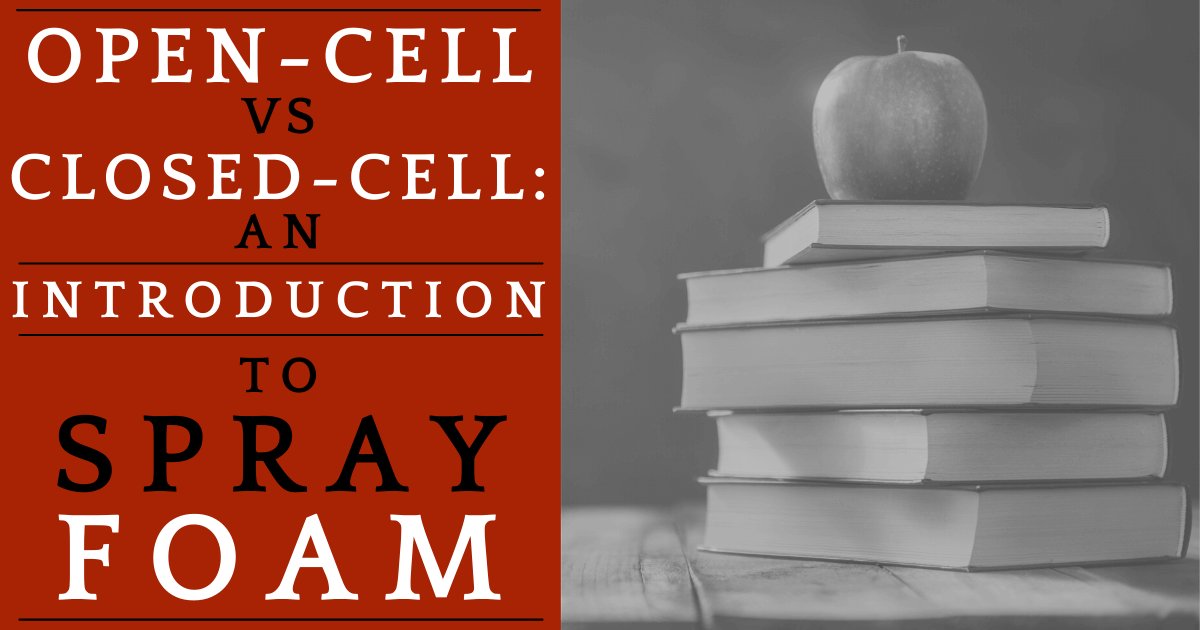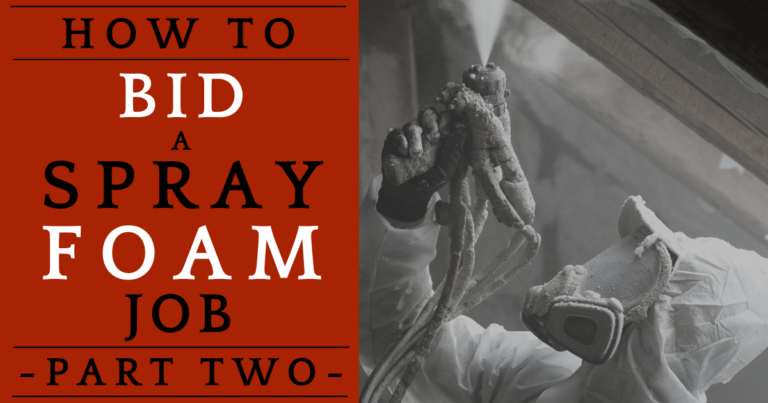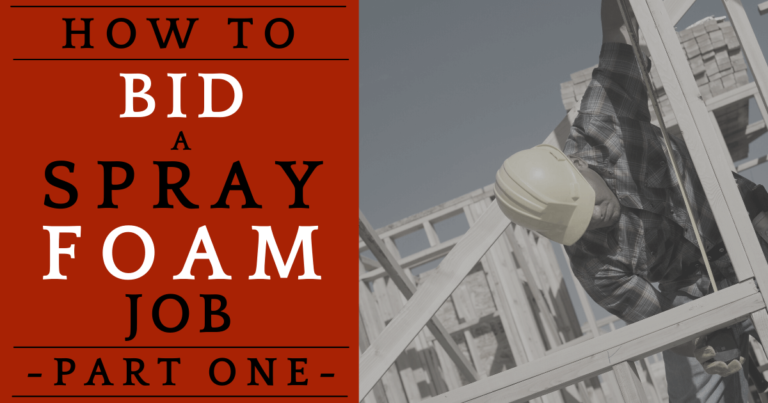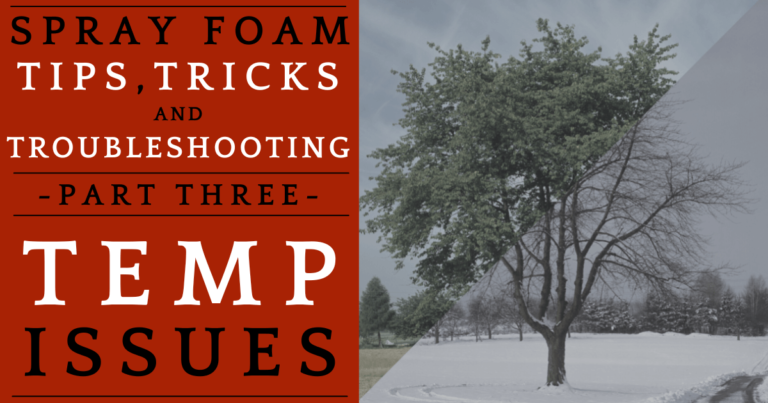Open-Cell vs. Closed-Cell: An Introduction to Spray Foam Insulation
Americans live in a culture with so many choices that it can be overwhelming. Even deciding what to eat for breakfast could make a man go mad!
Decision overwhelm extends to nearly every area of life – be it in the cereal aisle, in one’s career path, or even in insulating a home.
To overcome indecision, we could go with how things have “always been done” and allow tradition to choose our path for us. (Lumpy porridge for breakfast again?!)
Or we can buckle down, do the research, and figure out which choice is best in the here-and-now! Whatever we end up choosing after researching, truly understanding our options makes them seem less overwhelming. (Note: the best choice may still be the traditional option – but at least we would know why!)
As a spray foam contractor, you are probably no stranger to taking the less-travelled path. You’re a spray foam contractor, for goodness sake! There’s nothing “traditional” about that!
At Freedom Foam & Equipment, LLC, we believe to truly master one’s trade, one must thoroughly understand “the basics.”
So let’s start digging into our trade, dissecting all the lingo, and striving to understand spray foam insulation as well as we can, so we can better serve our customers.
Advantages of Using Spray Foam
Why should we break from the “old ways” of insulating and use spray foam insulation instead?
If you’re a spray foam contractor, you’re probably asked this question regularly.
So, let’s walk through some of the advantages of using spray foam over traditional fiberglass insulation (a.k.a. “batted” or “rolled” or “blanket” insulation).
Now. On paper, there’s nothing wrong with fiberglass insulation.
When it is performing as it is designed to perform, it is a reasonable option for insulating your home or office. It does a pretty good job blocking heat transfer between the outside and inside of a structure – as long as it is in place.
However.
Traditional batted insulation is notorious for settling in walls…because gravity. (Ahh! Science!)
If it isn’t filling portions of a wall, those portions are without protection from outside temperatures. Those empty spaces in the wall also allow the air conditioning or heat in a home to escape easily.
Energy transfer is a real problem in structures – and is why we insulate in the first place. Without proper coverage, it is very difficult to keep a home warm when it is -15 degrees outside…or cool in 115 degrees. (Yikes, indeed.)
There are ways of securing fiberglass insulation in the walls of your home, but that doesn’t help the next problem with traditional insulation: all those pesky, difficult-to-insulate areas, like around windows or electrical outlets.
If you can’t insulate an area, it is left to fend for itself in extreme weather. Unfortunately, that means your hard-earned cash will be thrown to the wind, literally falling (or flowing) through the cracks. (Poor cold wall…)
The takeaway here? Since settling in walls and hard-to-insulate areas are common with fiberglass insulation, air infiltration is a common problem.
Enter: Spray foam insulation! (Ooo, yay!)
Spray foam is unique among insulation options. It is sprayed into a structure’s wall cavities (or between roof rafters, etc.), a chemical reaction occurs, and foamy blankets expand to fill the target areas! It’s like magic…but it’s science! (Yay, science!)
Settling is not an issue with spray foam. It adheres to the substrate (or surface) onto which it is sprayed and stays there! That means there are significantly fewer problems with energy loss compared to fiberglass insulation – just because spray foam stays in place.
And those hard-to-reach areas? Pshhh! WHAT hard-to-reach areas?? This is (scientifically) magical spray foam insulation we’re talking about! It can fill the smallest cracks between your wall studs if you so choose!
But wait! There’s more!
In addition to spray foam insulation’s versatility, it also demonstrates higher R-values than most traditional fiberglass insulations.
(And all this can be yours for just 47 easy payments of…just kidding!)
What is an “R-Value?” Well, let’s get into that!
R-Values, Explained
The term “R-value” refers to the resistance a material exhibits to energy transfer across it. For each consecutive inch of material used, the total R-value of insulation will increase.
But there are only so many inches available within a wall.
And building codes require insulation to display specific R-values, depending on the building type and where you are in the country.
Therefore, it is imperative to make sure that any insulation you use follows the building code in your area before deciding on the correct insulation for your needs.
The R-values displayed by traditional insulation depend on the specific materials used by the manufacturer. On average, though, fiberglass insulations run in the ~R3/inch range. However, taking settling and air infiltration into consideration, the R-values for fiberglass insulation can be much lower in practice than advertised.
On the other hand, spray foam insulation delivers its true R-value since it stays in place and air cannot penetrate it. (Win-win!)
Those R-values differ based on the type and brand of spray foam used – but the R-values listed on the manufacturer’s Technical Data Sheet (TDS) are the actual R-values displayed by the end product.
Generally speaking, an open-cell foam tends to exhibit R-values of ~R4/inch, while closed-cell foam boasts ~R7/inch.
For all insulation types, the thicker the insulation, the higher the R-value exhibited. So, 3” of open-cell foam will be ~R12, while 3” of closed-cell foam will deliver an R-value of ~R21. (Wowza, right!?)
What is all this talk about “open-cell” and “closed-cell,” you ask?
Let’s take a look!
Open-Cell Foam
Different insulation materials rely on different mechanisms to block energy transfer across them. Open-cell foam uses air-filled spaces to insulate, depending upon the “open cells” that house the air to function properly.
This foam is lightweight, fluffy, and has “give” when squeezed or pressed – like a puffy winter coat! (Cozy!)
Easily trimmed and versatile, open-cell foam expands well to fill wall cavities. It – like any spray foam – effectively blocks air transfer between the outside and inside of a building, but open-cell foam is not intended to function as a moisture barrier.
Actual weights vary between spray foam brands, but open-cell foam is often called “1/2-pound” foam since one cubic foot of this material tends to weigh ~1/2 of a pound.
Open-cell foam lives its “best life” in warmer climates. If you work in a cold environment, however, closed-cell foam might be a better choice for your customers.
Closed-Cell Foam
Closed-cell foam insulates differently than its lighter-weight sibling. Trapping chemical additives – like blowing agents – in its cell matrix, closed-cell foam sets up firmly and does not allow any air or moisture to pass through it.
Since closed-cell foam is formulated to be denser than open-cell foam, it often weighs ~2 lbs per cubic foot. As such, closed-cell foam is also called “2-pound” foam. Closed-cell varieties that weigh less than 2 pounds per cubic foot exist, however, so refer to the manufacturer’s Technical Data Sheet (TDS) if you need more information regarding the weight of your spray foam.
If you live (or spray foam) in a cold climate, you will likely be better served by closed-cell foam than its open-cell counterpart. The firm texture produced makes trimming closed-cell spray foam more difficult than open-cell, but the physical nature of this foam allows it to act as a moisture barrier in a wall cavity as well as insulation. Handy in cold, wet climates!
The “A-Side of Spray Foam
Spray foam’s expansion depends on a chemical reaction. (Yay! Science, again!)
There are 2 “sides” of spray foam that, when mixed, create the desired product. The two sides have very different components and must both be present – generally in a 1:1 ratio – to form foam.
Also referred to as “iso,” the “A-side” of foam always contains some sort of isocyanate, such as methylene biphenyl diisocyanate (or MDI). The type of isocyanate that is used in A-side may differ from manufacturer to manufacturer, but not by much.
Essentially, A-side is a glue. When mixed with B-side, A-side participates in the chemical “magic” of forming spray foam and helps foam to adhere well to the substrate (or surface) it is sprayed onto.
The “B-Side” of Spray Foam
The components of B-side are much more variable than A-side. B-side formulation is where manufacturers really shine, meticulously creating different foams for specific applications.
Also called “resin” or “polyol,” every B-side contains catalysts, polyols, blowing agents, and fire retardants. The rest of the mixture components and the ratios used are manufacturing secrets! (No, you can’t have my spinach puff recipe!)
But B-side would be nothing without A-side. Together, the two sides of spray foam form the polyurethane matrix that has revolutionized the insulation industry!
Some things are just better together – like peanut butter and jelly or milk and cookies! (Not all traditions need fixing!)
Conclusion
Sometimes, the old, traditional ways really are best. Great wisdom can be gained from following in the footsteps of our ancestors.
Sometimes, though, we need to stand on their shoulders to reach farther than ever before. We can use their wisdom to make a new path – learning from the past to create better solutions for the future.
Spray foam insulation is a giant step forward in the insulation industry.
As a spray foam contractor, you have the great honor of bringing this amazing product to your community and helping save your customers loads of money on their energy bills!
If you have any questions or need help forging your own spray-foaming path, feel free to reach out to us!
We look forward to working with you.







